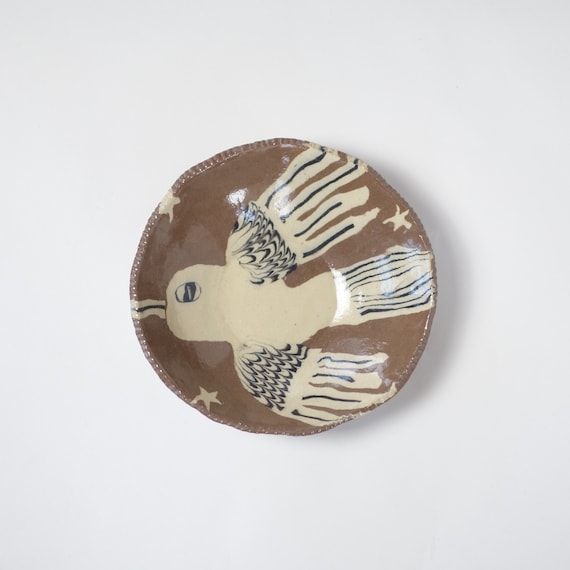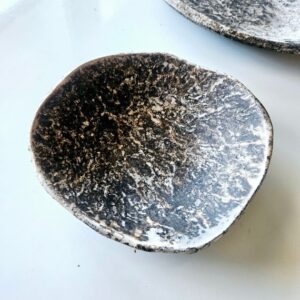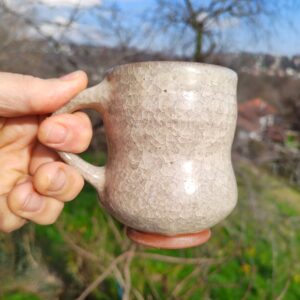Are you a pottery enthusiast looking to add a touch of artistry to your creations? In this blog post, we delve into the enchanting world of nerikomi pottery techniques. Discover 5 beautiful methods that will inspire and elevate your pottery game. Let’s embark on a creative journey together and unlock the secrets of crafting stunning patterns with layered clays.
Marbling Technique
Pottery enthusiasts and artists alike can elevate their craft by mastering the marbling technique. This method allows for the creation of stunning patterns by blending colored clays together before shaping the pottery. Whether you’re a beginner or a seasoned potter, learning how to marble effectively can add a unique and beautiful touch to your creations.
How to Make Marbled Clay
Understanding the Basics of Marbling
Marbling in pottery involves mixing different colored clays to create intricate and visually appealing patterns. By combining contrasting or complementary colors, you can achieve a marbled effect that adds depth and dimension to your pieces. The key to successful marbling lies in proper preparation, technique, and creativity.
Essential Materials and Tools
To get started with the marbling technique, you will need:
- Polymer clay in various colors (such as Sculpey III Polymer Clay)
- Rolling pin
- Clay cutting tools
- Work surface
- Optional: clay conditioning machine for consistent thickness
Step-by-Step Guide to Marbling
- Prepare Your Workspace: Clear a clean and flat surface to work on. Dust the area with cornstarch or baby powder to prevent the clay from sticking.
- Condition the Clay: Knead each color of clay separately to soften it and make it more pliable. This step is crucial for achieving a smooth marbled effect.
- Roll Out the Clay: Roll each color of clay into sheets of equal thickness using a rolling pin. Aim for uniform thickness to ensure even blending.
- Layer the Clay: Stack the sheets of clay on top of each other in the desired color pattern. Press them together gently to adhere.
- Blend the Colors: Roll the stacked clay sheets together to create a marbled effect. Avoid overworking the clay to maintain distinct patterns.
- Shape Your Pottery: Once you’re satisfied with the marbled pattern, use clay cutting tools to shape and mold the clay into your desired form.
Benefits of Using the Marbling Technique
- Unique Designs: Each marbled piece is one-of-a-kind, showcasing your creativity and skill.
- Versatility: Marbling can be applied to various pottery projects, from small trinkets to larger vessels.
- Visual Appeal: The intricate patterns created through marbling add depth and interest to your pottery.
By mastering the marbling technique in pottery, you can take your creations to the next level and impress with your artistic flair and attention to detail. Experiment with different color combinations and patterns to discover the endless possibilities of this versatile technique.
Spiral Technique
Are you ready to take your clay art to the next level? The Spiral Technique is a fascinating method that allows you to create mesmerizing spiral designs using different colored clay strips. In this blog post, we will guide you through the process of layering and twisting these clay strips to form stunning patterns that will captivate the eye.
Getting Started: Materials You’ll Need
Before diving into the Spiral Technique, make sure you have the following materials at hand:
- Polymer clay: Choose high-quality polymer clay in a variety of colors. Brands like Fimo, Sculpey, and Kato Polyclay offer a wide range of vibrant options.
- Clay roller: Use a reliable clay roller to flatten and shape the clay strips effortlessly. The Makin’s Professional Ultimate Clay Machine is a popular choice among clay artists.
- Craft knife: A sharp craft knife will help you cut precise strips of clay for intricate designs. Consider the X-Acto #1 Precision Knife for detailed work.
- Work surface: A smooth work surface, such as a glass or acrylic sheet, will provide a stable base for creating your spiral designs.
Step-by-Step Guide to Creating Spiral Designs
Follow these steps to master the Spiral Technique and craft beautiful clay art pieces:
- Prepare the clay: Condition the polymer clay by kneading it until soft and pliable. Roll out each color into thin strips of equal length and width.
- Layer the clay: Arrange the clay strips in a desired pattern, overlapping them slightly to create a cohesive design.
- Twist the clay: Starting from one end, gently twist the layered clay strips in a spiral motion to form a mesmerizing design.
- Shape and refine: Use your hands or tools to adjust the shape of the spiral, ensuring symmetry and balance in the design.
- Bake the clay: Follow the manufacturer’s instructions to bake the clay in a preheated oven, allowing it to cure and harden into a durable finish.
Tips for Success
To achieve stunning results with the Spiral Technique, keep the following tips in mind:
- Experiment with different color combinations to create vibrant and dynamic designs.
- Practice twisting the clay strips at varying speeds to achieve different spiral effects.
- Use a clay blade or needle tool to create intricate details and textures within the spiral design.
- Seal your finished clay art with a clear varnish or resin for a glossy and professional appearance.
Unleash your creativity and explore the endless possibilities of the Spiral Technique in your clay art projects. With a bit of practice and experimentation, you’ll be crafting captivating spiral designs that are sure to impress!
Patchwork Technique
The patchwork technique in clay art involves cutting colored clay slabs into geometric shapes and piecing them together to form unique patterns. This technique allows artists to create intricate and visually captivating designs that showcase their creativity and skill. In this blog post, we will delve deeper into the patchwork technique, exploring its origins, process, and the endless possibilities it offers for creating stunning works of art.
Origins of Patchwork Technique
The patchwork technique has a rich history that dates back centuries, with roots in various cultures around the world. From traditional quilting patterns to intricate mosaic designs, the concept of piecing together different shapes and colors to form a cohesive whole has been a fundamental aspect of artistic expression.
Process of Creating Patchwork Patterns
To create a patchwork design in clay art, artists start by rolling out colored clay slabs of different hues. These slabs are then cut into geometric shapes such as squares, triangles, or hexagons using tools like clay cutters or knives. The artist arranges these shapes in a deliberate manner, experimenting with different combinations until a visually pleasing pattern emerges.
Tools and Materials
- Clay slabs in various colors (e.g., Sculpey Premo Accents Clay)
- Clay cutters or knives for precision cutting
- Rolling pin for flattening clay slabs
- Work surface for assembling the patchwork design
Benefits of Patchwork Technique
The patchwork technique offers a range of benefits for artists looking to elevate their clay art creations:
- Creativity: Artists can unleash their creativity by experimenting with different color combinations and geometric shapes to create unique patterns.
- Precision: The use of tools like clay cutters allows for precise cutting and shaping, ensuring a clean and polished finish to the final artwork.
- Versatility: The patchwork technique can be applied to various forms of clay art, including sculptures, jewelry, and decorative pieces, making it a versatile and adaptable technique.
Examples of Patchwork Art Products
Several brands offer clay products specifically designed for the patchwork technique, such as:
- Polyform Sculpey III Polymer Clay: Known for its vibrant colors and easy-to-work-with texture, this clay is a popular choice for artists practicing the patchwork technique.
- Fimo Soft Polymer Clay: This clay brand offers a wide range of colors and is known for its flexibility and durability, making it ideal for intricate patchwork designs.
In conclusion, the patchwork technique in clay art is a fascinating and rewarding method for artists to explore their creativity and create visually stunning pieces. By experimenting with different colors, shapes, and arrangements, artists can unlock endless possibilities and push the boundaries of traditional clay art techniques.
Embrace creativity and explore the art of nerikomi pottery
In conclusion, exploring these 5 stunning nerikomi pottery techniques will elevate your pottery designs to new heights. Embrace creativity by playing with various patterns and color palettes to craft exquisite, one-of-a-kind pieces.








The Spiral Technique looks fascinating. Does the direction of the spiral affect the final look of the pottery?
Yes, the direction of the spiral can indeed impact the final design. Experimenting with clockwise and counterclockwise spirals can yield different visual effects.
These techniques sound amazing! Any book recommendations for beginners looking to delve deeper into nerikomi pottery?
Sure thing! For diving deeper into nerikomi pottery, check out these books:
1. Mastering Hand Building by Sunshine Cobb – A great start for those foundational skills.
2. Color in Glazes by Linda Bloomfield – Perfect for adding that pop of color.
3. The Ceramic Process by European Ceramic Work Centre – Covers all the cool techniques.
Happy reading and happy potting! 📚🎨✨
I tried the Marbling Technique with Amaco Potters Choice glazes, and it turned out beautifully! Any tips on achieving more intricate patterns?
That’s awesome to hear! For more intricate marbling patterns with Amaco Potters Choice glazes, try these tips:
1. Layer Thinly: Apply thin layers of different colors to create more complex swirls.
2. Use a Comb or Toothpick: Gently drag a comb or toothpick through the glaze to create fine, detailed lines.
3. Experiment with Timing: Vary the time between applying colors to see how they blend differently.
4. Tilt and Rotate: Tilt and rotate your piece while the glaze is still wet to encourage natural, intricate patterns.
Happy marbling, and may your patterns be ever intricate and stunning!